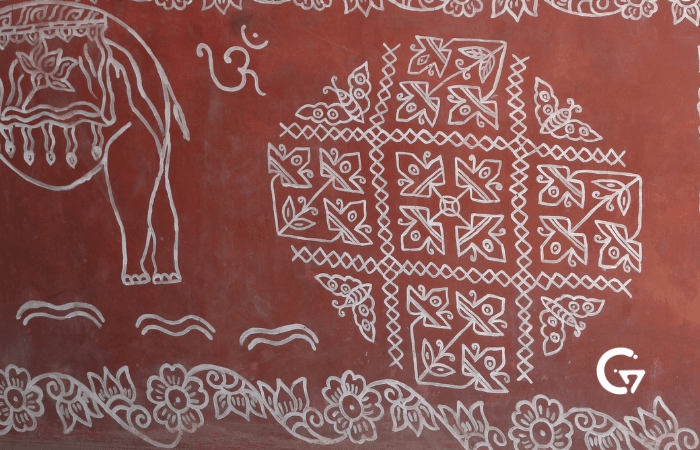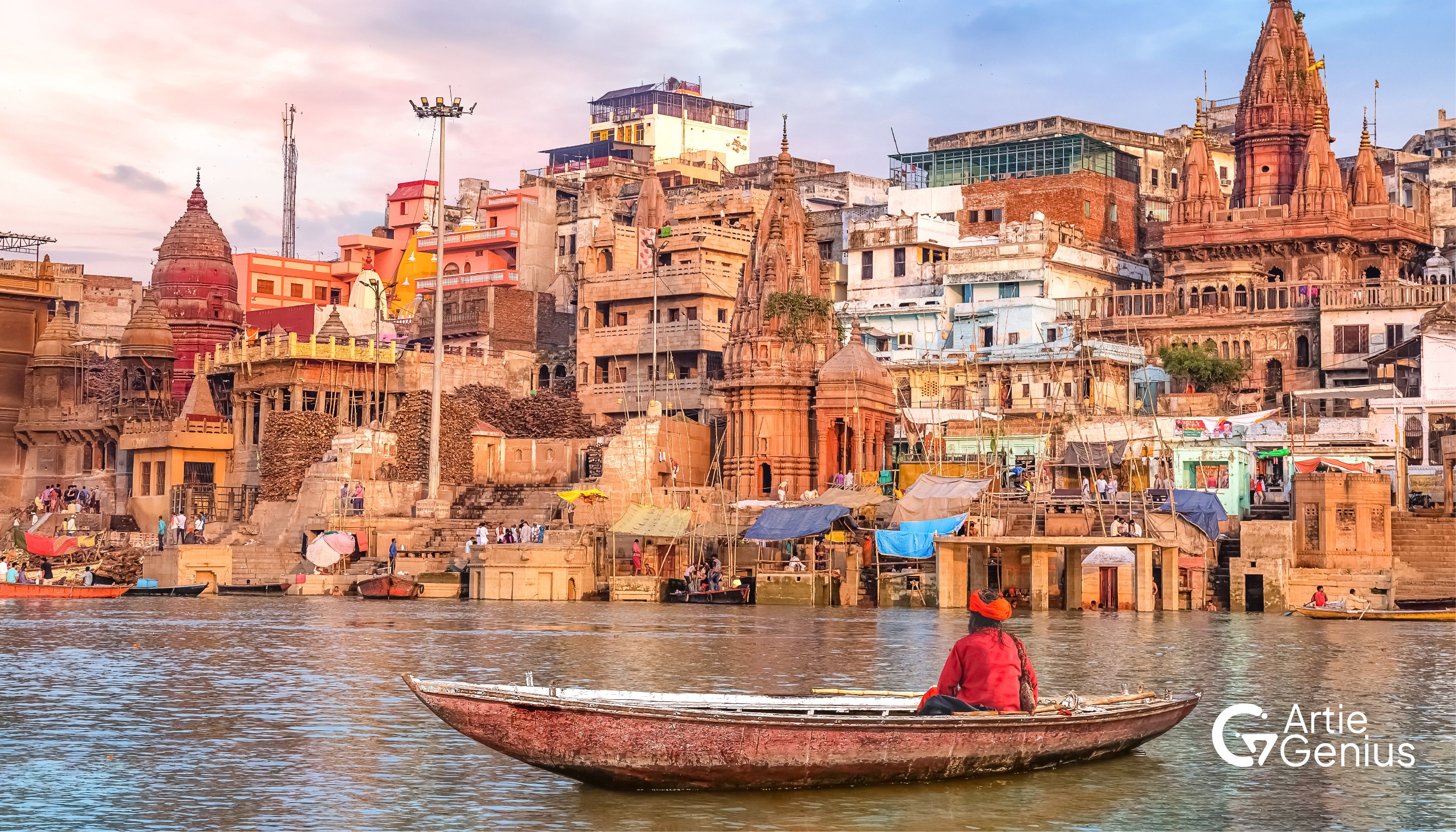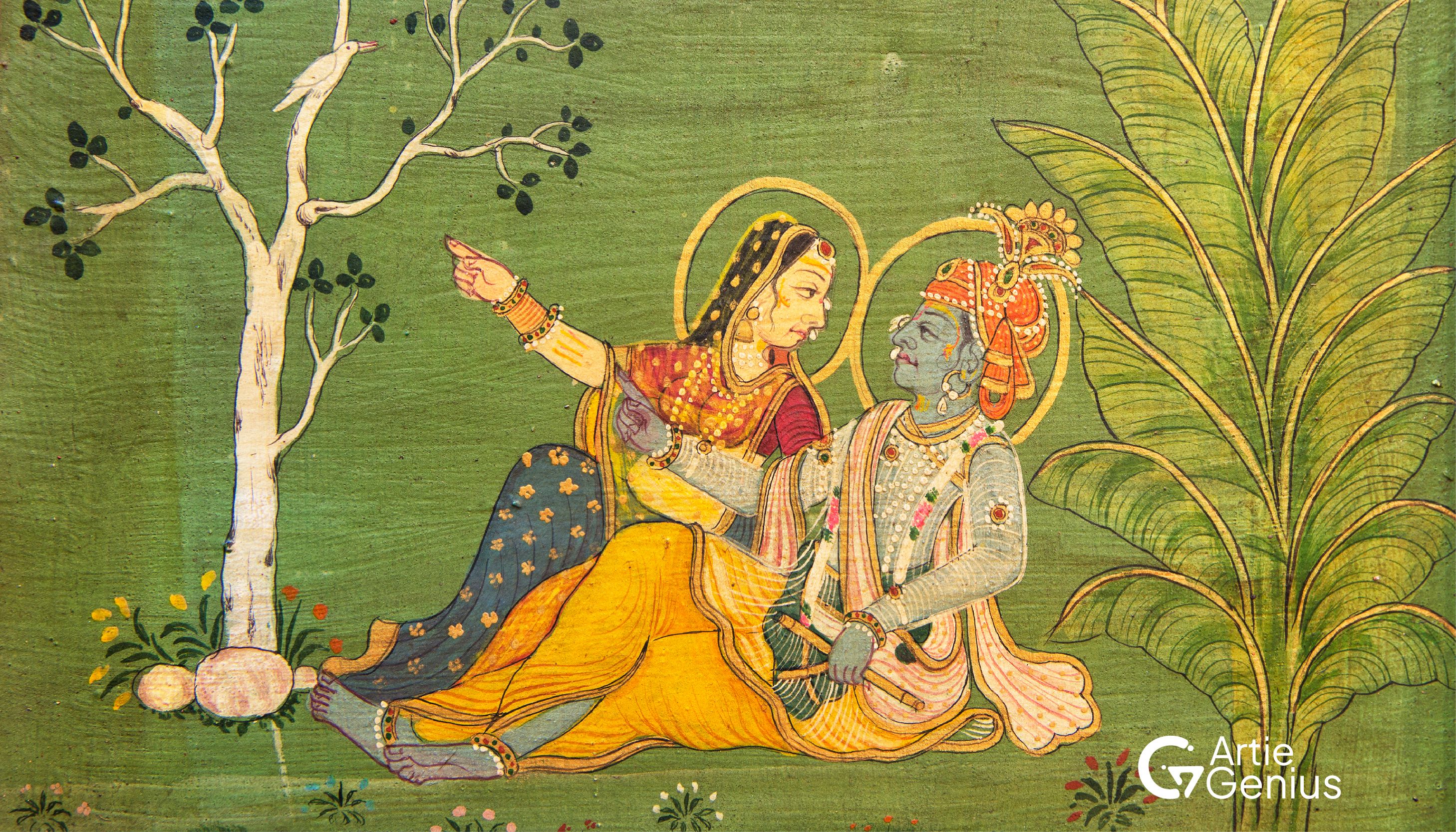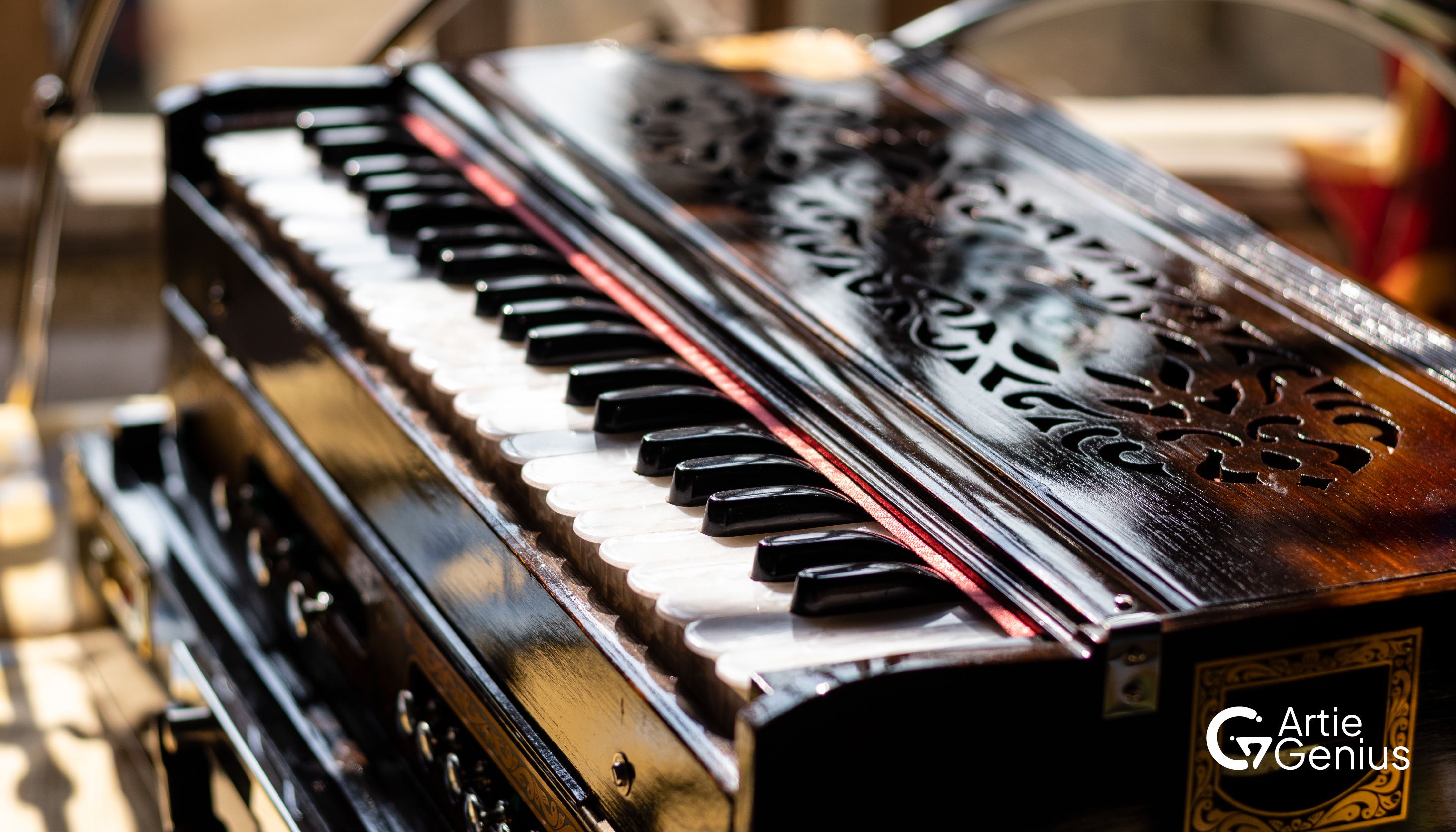Folk paintings of India are a captivating glimpse into the soul of the country. They are a vibrant tapestry woven with regional styles, age-old techniques, and stories passed down through generations. Unlike their classical counterparts, folk art paintings are not confined to the studios of elite artists.
Instead, they blossom in the homes and workshops of rural communities, reflecting the essence of everyday life, local folklore, and religious beliefs.
What is Folk Art?
Folk art is a broad term encompassing various artistic expressions of a community. It includes everything from folk paintings and sculptures to textiles and pottery. Folk art is not merely decorative; it serves as a repository of cultural heritage, traditions, and narratives. Understanding what folk art is helps us appreciate the rich cultural tapestry it represents.
Types of Folk Art
There are numerous types of folk art practiced across India. Below is the revised text for clarity and correctness:
Tribal Art: This art form is associated with indigenous communities and reflects their unique way of life and connection with nature. Manjusha Art: A distinct style of miniature paintings from Bengal, traditionally created on old manuscript covers.
Mural Paintings: Large-scale artworks adorning the walls of houses, temples, and other public spaces.
Top 10 Traditional and Famous Folk Paintings of India Boasts a dazzling array of folk paintings of India, each with its distinctive style, narrative, and technique. Here, we delve into ten of the most celebrated ones:
1. Madhubani Paintings
Hailing from the Mithila region of Bihar, Madhubani paintings are characterized by intricate geometric patterns, mythological themes, and vibrant hues. Traditionally, these paintings were created by women on the walls and floors of their homes during festivals and special occasions. Natural dyes derived from leaves, flowers, and minerals were used to create the colors. Today, Madhubani paintings adorn everything from canvas and paper to textiles and pottery.
Key Points: Folk art painting style from Mithila region of Bihar Use of natural dyes and vibrant hues Intricate geometric patterns and mythological themes
2. Warli Paintings
Warli paintings from Maharashtra are known for their simplicity and earthy elegance. Executed in white on a reddish-brown background, these paintings depict scenes from everyday life, hunting expeditions, and rituals. The figures are depicted in a stick-figure style, and the narratives are often symbolic. Warli art is believed to have originated with the Warli tribe, an indigenous community residing in the Sahyadri hills.
Key Points: Folk art form from Maharashtra White on reddish-brown background Depicts scenes from everyday life, hunting, and rituals
3. Pattachitra Paintings
Orissa's Pattachitra paintings are captivating narratives on cloth. Traditionally created on canvas or specially treated palm leaves, these paintings showcase stories from the epics of Mahabharata and Ramayana, along with Vaishnava devotional themes. The vibrant colors and intricate details make Pattachitra paintings truly mesmerizing.
Key Points: Folk art form from Orissa Created on cloth, canvas, or palm leaves Depicts stories from epics and devotional themes
4. Kalighat Patua Paintings
West Bengal's Kalighat Patua paintings originated around the Kalighat temple in Kolkata. These paintings are known for their bold outlines, expressive figures, and narratives that range from mythology to social commentary. Initially created on handmade paper with natural colors, today, these paintings are often made with tempera and acrylic paints.
Key Points: Folk art form from West Bengal Bold outlines, expressive figures Mythological and social commentary themes
5. Tanjore Paintings
Tanjore paintings from Tamil Nadu are renowned for their rich ornamentation, use of gold leaf, and exquisite craftsmanship. These paintings typically depict deities from the Hindu pantheon, particularly Bharatnatyam dancers and scenes from Krishna's life. The vibrant colors, intricate details, and the use of gold leaf imbue Tanjore paintings with an aura of grandeur.
Key Points: Folk art form from Tamil Nadu Rich ornamentation, use of gold leaf Depicts Hindu deities, dancers, and Krishna's life
6. Marigold Art (Gongapadi)
Marigold art, also known as Gongapadi, is a unique art form from Andhra Pradesh. It involves the meticulous arrangement of dried marigold florets to create intricate patterns and figures on cloth. These vibrant creations depict deities, scenes from mythology, and even contemporary themes. Marigold art is a seasonal art form, as the delicate marigold flowers need to be carefully dried and preserved.
Key Points: Folk art form from Andhra Pradesh Uses dried marigold florets to create intricate patterns Depicts deities, mythology, and contemporary themes
7. Bhil Paintings
The Bhil paintings of Madhya Pradesh and Rajasthan are a vibrant expression of the Bhil tribe's rich cultural heritage. These paintings are characterized by bold lines, geometric patterns, and a profusion of colors.
The narratives often depict hunting scenes, daily life, and animistic beliefs. Bhil art is not just an art form; it's a way for the Bhil community to preserve their traditions and connect with their ancestors.
Key Points: Folk art form from Madhya Pradesh and Rajasthan Bold lines, geometric patterns, and vibrant colors Depicts hunting scenes, daily life, and animistic beliefs
8. Santhal Paintings
Hailing from Jharkhand, Santhal paintings are known for their raw energy and simplicity. Executed in a limited palette of black, white, and red, these paintings depict scenes from Santhal life, including hunting expeditions, festivals, and rituals. The figures are often depicted in a dynamic and expressive style. Santhal art is a powerful medium for the Santhal tribe to express their unique worldview.
Key Points: Folk art form from Jharkhand Limited palette of black, white, and red Depicts Santhal life, hunting, festivals, and rituals
9. Phad Paintings
Phad paintings from Rajasthan are vibrant narrative scrolls traditionally used by wandering bards (Bhopa) to narrate stories from Hindu epics and local folklore. These large-scale paintings are characterized by bold colors, flat figures, and a focus on storytelling. The vibrant visuals and captivating narratives of Phad paintings make them a truly engaging art form.
Key Points: Folk art form from Rajasthan Vibrant narrative scrolls used by bards for storytelling Bold colors, flat figures, and focus on Hindu epics and folklore
10. Muria Paintings
Muria paintings from Chhattisgarh are known for their expressive figures, symbolic language, and vibrant colors. These paintings depict scenes from Muria life, including festivals, rituals, and their deep connection with nature. The use of natural dyes and the inherent symbolism in the paintings make Muria art a fascinating window into the Muria tribe's culture and beliefs.
Key Points: Folk art form from Chhattisgarh Expressive figures, symbolic language, and vibrant colors Depicts Muria life, festivals, rituals, and connection with nature
Conclusion Folk paintings of India are more than just artistic expressions; they are vibrant testaments to the country's rich cultural tapestry. Each region boasts its unique style, reflecting the local customs, traditions, and beliefs. Exploring the world of folk paintings of India is a captivating journey that allows us to appreciate the artistic genius of rural communities and gain a deeper understanding of India's diverse heritage.
This article provides a glimpse into the captivating world of folk paintings of India. We encourage you to delve deeper and explore the vast array of styles and narratives waiting to be discovered. Understanding what is folk art and the types of folk art can greatly enhance our appreciation of these beautiful creations.



